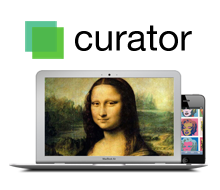Curating the clutter

If you're like me, you've probably noticed that it seems to be getting more difficult to find solid sources of information on the Interwebs. Search engine results, especially for popular topics, are often gummed up by search engine marketers gaming the system. Then there's the filter bubble.
Meanwhile, the cacophony gets louder all the time. There are now more than 100 million blogs on Tumblr alone.
If you're wondering what effect this might be having on our ability to find reputably sourced information online, you might consider reading The Cult of the Amateur, by Andrew Keen. Written a few years ago just as social media was just beginning to take off, Keen predicted that good information would become harder to find as we became overwhelmed by the sheer quantity presented to us without any sort of system for vetting its quality. I think it's fair to say he's been on the mark.
A golden opportunity for museums
This presents a golden opportunity for museums, and they are uniqely well-positioned to take advantage of it. Museums are quite often the leading authorities on very specific topics, all curated by experts with years of experience both on the topics themselves and in the research methods employed to sift through them.
There's an Andy Warhol museum, a Norman Rockwell museum, a national air & space museum, one that's all about Maine's maritime history and one that has the foremost collection of the works of Fitz Henry Lane. There's a Rock 'n' Roll museum and yes, there's even a museum that's all about sex.
A key part of a museum's digital engagement strategy should be to use its website and social media properties to position the institution as the foremost authority on whatever topics or stories that form its raison d'etre. Fortunately, this aligns perfectly with a museum's mission.
Content: still king, and museums can own it
To be most effective, a museum shouldn't use its website to simply hawk exhibitions and events at the physical space. Instead, museum professionals should pursue a content-based strategy, creating what Jasper Visser recently called a museum as magazine. At a minimum, a museum should have a blog residing on its domain (not blogspot or typepad).
Museums should think beyond the information they have housed in their collection, or the projects their curators are working on in-house. They should also hook into Google alerts to keep abreast of new articles being published within their area of subject matter expertise, and comment, curate and share that information back. In short, they should own their topics online and become recognized as the foremost thought leader on them.
Probably the best example of a museum living this content-based strategy is the Walker Art Center in Minneapolis. If you spend time on Walker's site, you'll see they use it not just to talk about exhibits, but ideas.
If other museums take a similar content-based approach, and deploy the talents of the supremely knowledgeable curatorial staff they already have in a new way to extend their reach through their websites, they'll educate, edify and cut through the clutter of the sprawling Web.

